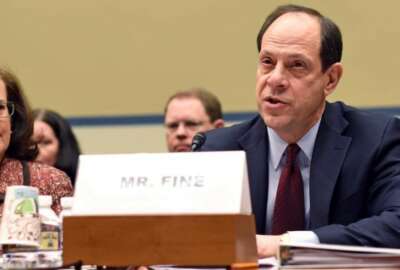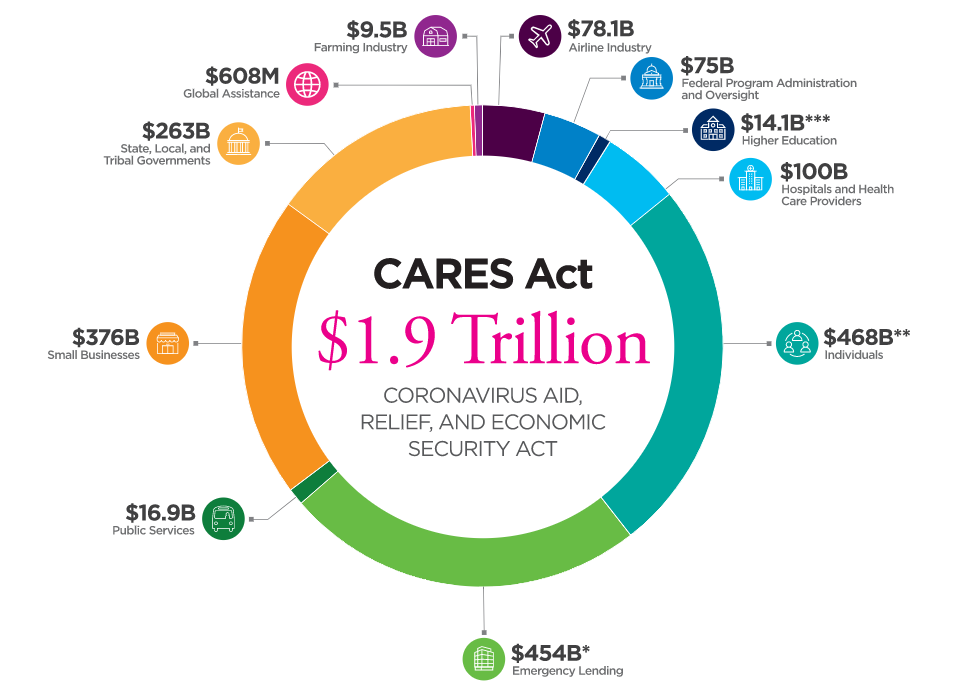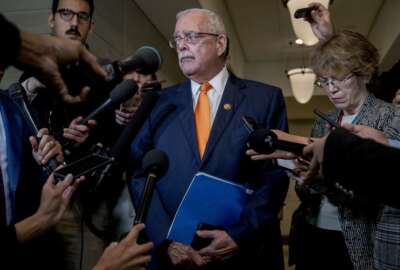
Pandemic board launches spending tracker, but with little for oversight groups to parse
While a governmentwide IG council promises regular updates to the website, government transparency advocates say the platform, in its current state, gives them few...
The Pandemic Response Accountability Committee, following a recent leadership shakeup from President Donald Trump, has gained some momentum building an oversight apparatus that’ll oversee nearly $3 trillion in oversight spending.
So far, a month into its operations, the committee has launched a website designed to serve as a one-stop-shop to oversee coronavirus spending.
The website uses the same IT infrastructure as Oversight.gov, and so far gives a big-picture overview of pandemic spending. It also directs users to a hotline to report tips about fraud, waste and abuse.
Much like Oversight.gov, the PRAC website also keeps track of agency audits, reports and investigations that stem from spending in the Coronavirus Aid, Relief, and Economic Security (CARES) Act, as well as press releases from U.S. Attorneys’ offices on pandemic-related enforcement.
Meanwhile, the Council of the Inspectors General on Integrity and Efficiency has announced Robert Westbrooks, a career government watchdog, will serve as the committee’s executive director.
Read more: Agency Oversight News
Earlier this month, the president effectively prevented former acting Defense Department IG Glenn Fine from serving as PRAC chairman by nominating a new DoD acting IG.
CIGIE Chairman Michael Horowitz, the Justice Department’s IG, currently serves as the committee’s acting chairman.
Launching a website and naming an executive director 30 days into the committee’s lifecycle meets statutory deadlines in the CARES Act. Meanwhile, the committee promises regular updates to the website to improve its functionality.
“Today’s launch of the PRAC’s website is the first of many steps that the PRAC will take to ensure transparency and accountability regarding the federal government’s response to the coronavirus pandemic,” Horowitz said in a statement Monday.
However, government transparency advocates say the platform, in its current state, gives them few options to parse the data for greater accountability — one of the success stories of its predecessor from 12 years ago, Recovery.gov.

While the website meets the requirements of building a “user-friendly, public-facing website to foster greater accountability and transparency” within 30 days of the CARES Act going into effect, Rebecca Jones, policy counsel for the Project on Government Oversight, said the site in its current form suffers from a “lack of robustness.”
“It’s kind of a bit vague, and a little bit of a 50,000-foot view, as opposed to the detail we really need to oversee this spending,” Jones said in an interview. “And given how fast things are moving, I’m very concerned about that.”
Rather than wait for future updates from the pandemic committee, Jones said POGO will soon release its own tracker of pandemic spending.
CIGIE has taken cues from the nonprofit in the past. POGO, for example, launched a webpage in 2012 that tracked IG vacancies in the federal government before CIGIE took over that function years later with an update to Oversight.gov.
“Because the spending is going to the American people, the American people should be able to see where this is going in their community,” Jones said. “Otherwise, it’s really reliant on an opaque system that doesn’t work and doesn’t have the transparency necessary to work, and to hold people accountable and to make sure the money is going where it’s needed most urgently.”
Given what little detail the CARES Act outlines for the website, and with only a month to develop it, Jennifer Ahearn, the policy director for Citizens for Responsibility and Ethics in Washington, called the platform a “really good first step” that needs follow-up action.
“I certainly anticipate that it will be filled out a lot more with substance, but when you look at the categories of things that they are planning to put up, I think they are headed in the right direction,” Ahern said.
Getting a handle on the data
While the rollout of the pandemic committee bears some resemblance to the Recovery Accountability and Transparency Board that Congress stood up in the aftermath of the 2008 recession, there are significant differences.
For one, Earl Devaney, the former chair of the RAT board, said the pandemic committee will oversee a much larger sum of money. In addition, Ahern said the recovery board, in overseeing the Troubled Asset Relief Program, managed a crisis “somewhat localized to the financial industry.”
“The effects, obviously, were much broader than that, but in terms of what the goals of what the TARP were, that was really run through a much smaller number of agencies,” she said.
The pandemic board counts nearly two dozen IGs as members, which compared to the recovery board’s membership of 13 IGs, reflects the cross-cutting impact the pandemic has had on the economy has a whole.
“From an oversight perspective, that really paints the picture of the task that is before the PRAC,” Ahern said. “When I look at it, I just think that collecting all that information in one place, in and of itself, is going to be a huge help to transparency and accountability because otherwise you really have to go hunting in a lot of places to this information.”
In terms of fraud prevention, the recovery board set a high bar, and earned bipartisan respect for bringing the fraud rate for stimulus spending down to about 1%.
Irvin McCullough, the deputy legislative director of the Government Accountability Project, said the pandemic board’s site “seems a little bit bare-bones” in its current form, but said that reflects the slow start the committee’s had in establishing its oversight.
“I’m hoping — because CIGIE has been such a leader in adapting technologies advances for their educational and transparency initiatives like Oversight.gov — that CIGIE is going to be able to turn this into a vibrant resource for all the public to know that their tax dollars are being spent accountably,” McCullough said.
Devaney, in an interview earlier this month, chalked up some of the success of Recovery.gov to a tool that allowed users to enter their ZIP code and track stimulus spending in their area, and report anomalies to an oversight hotline.
Making public transparency a top priority for Recovery.gov, he said, helped empower community-level watchdogs all over the country.
POGO’s Jones said it will take a while for the PRAC to get a handle on the kind of complex data needed to build the infrastructure behind a site like Recovery.gov.
But not having a timeline of when the committee will stand up that kind of infrastructure, she said, “is of serious concern.”
“It is incredibly important to have that kind of crowdsourcing that [Earl] Devaney was talking about. Not only because it can catch bad actors, but it can catch improper payments,” Jones said. “If you have a business that’s no longer there, everyone will want to know about that. It’s not necessarily catching some wrongdoing, but a mistake that could potentially shift tens of thousands of dollars into a local business in your community that would have otherwise gone to waste.”
Meanwhile, the launch of the website drew praise from the Democratic leadership of the House Oversight and Reform Committee, who called it an “important step towards providing transparency to the American people about how their taxpayer dollars are being spent.”
Committee Chairwoman Carolyn Maloney (D-N.Y.) also joined government operations subcommittee chairman Gerry Connolly (D-Va.) and national security subcommittee chairman Stephen Lynch (D-Mass.) in supporting CIGIE’s choice of Westbrooks as the committee’s executive director.
Westbrooks recently served as the IG for the Pension Benefit Guaranty Corporation, charged with overseeing the retirement benefits of 35 million American workers and retirees.
He’s also held leadership posts at IG offices for the Small Business Administration, the Transportation Department, the Postal Service and the National Archives and Records Administration.
“As a former inspector general, accountant, and auditor, Mr. Westbrooks will help the committee conduct strong oversight that is urgently needed,” the committee leaders said.
Meanwhile, Horowitz said he chose Westbrooks to lead the committee because of his “vast experience in federal oversight.”
Copyright © 2025 Federal News Network. All rights reserved. This website is not intended for users located within the European Economic Area.
Jory Heckman is a reporter at Federal News Network covering U.S. Postal Service, IRS, big data and technology issues.
Follow @jheckmanWFED
Related Stories

Recovery Board’s roadmap would suit pandemic oversight panel just fine, experts say




